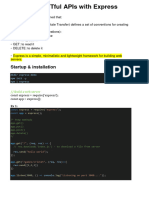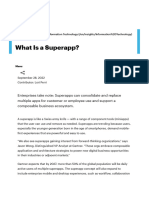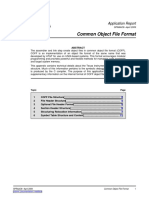0% found this document useful (0 votes)
4 views9 pagesWeb II Middleware in Express Lesson012
Middleware in Express.js are functions that interact with the request and response objects in the request-response cycle, allowing for operations like logging, modifying requests, and handling errors. There are several types of middleware including application-level, router-level, error-handling, and built-in middleware, each serving different purposes. Implementing middleware involves using app.use() or router.use() to chain functions for complex request processing, and Express provides built-in middleware for common tasks such as parsing JSON and URL-encoded data.
Uploaded by
BRIAN MUTURICopyright
© © All Rights Reserved
We take content rights seriously. If you suspect this is your content, claim it here.
Available Formats
Download as DOCX, PDF, TXT or read online on Scribd
0% found this document useful (0 votes)
4 views9 pagesWeb II Middleware in Express Lesson012
Middleware in Express.js are functions that interact with the request and response objects in the request-response cycle, allowing for operations like logging, modifying requests, and handling errors. There are several types of middleware including application-level, router-level, error-handling, and built-in middleware, each serving different purposes. Implementing middleware involves using app.use() or router.use() to chain functions for complex request processing, and Express provides built-in middleware for common tasks such as parsing JSON and URL-encoded data.
Uploaded by
BRIAN MUTURICopyright
© © All Rights Reserved
We take content rights seriously. If you suspect this is your content, claim it here.
Available Formats
Download as DOCX, PDF, TXT or read online on Scribd
/ 9


































































































